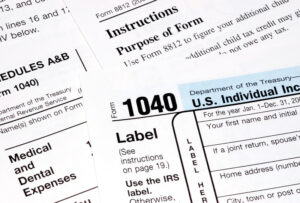Are you loan savvy? If not, then it is important to learn about the differences between secured and unsecured loans before applying with a lender or making a plan to handle your financial debt. Many people seek loans when it’s time to pay for college, purchase a car, pay off debt, make home improvements or make a big purchase. Here are the differences between secured and unsecured loans so that you have a better understanding of the loan process when it comes time to select an option. Knowing the benefits of each will allow you to make an informed decision that fits your financial goals.
What Is a Secured Loan?
A secured loan is one that’s financially supported by some type of collateral, which is something of value that you own. The most common types of collateral are vehicles, property and jewelry. If you get approved for this type of loan, then the lender will hold onto the title or deed of the property being used as collateral or place a lien on it until you have paid back your loan. You can think of collateral as a lender’s insurance policy against a person who tries to take their money without paying it back. Secured loans are advantageous because lenders have more trust in the person and can offer higher loan amounts. They are also more common than one would think; car and mortgage loans are both examples of secured loans. Other advantages of securing your loan with collateral is that they often come with longer borrowing periods and lower interest rates.
It is important to note, however, that collateral may not cover the full amount of your debt if a loan gets defaulted. Even though lenders repossess property for defaulted secured loans, you could still end up owing money if the worth of your collateral did not equal that of the loan. When lenders repossess property, they sell it and use the proceeds to pay off the loan, meaning you might still be responsible for paying the difference if your property sells below value.
What Is an Unsecured Loan?
An unsecured loan is a sum of money that you borrow without putting up any collateral. When lenders offer unsecured loans, they are taking on a higher risk and must rely solely on the integrity of the borrower to repay the loan’s principal and interest. In many cases, lenders perform background and credit checks on potential borrowers to help them assess this risk. Some disadvantages of this loan option in comparison to secured loans is that available loan amounts tend to be lower and interest rates higher. However, they are a good option for individuals looking for a personal loan that can be spent wherever. Often used by individuals who don’t have the assets needed to provide collateral, they are a great borrowing option for anyone, regardless of financial status. Some examples of common unsecured loans include credit cards, student loans and personal lines of credit.
Knowing the difference between a secured loan and an unsecured loan is the first step to making a smart plan for borrowing. You can now weigh the benefits of each option and make a plan that works best for your financial goals. Never be afraid to ask questions and gather as much information as possible when entering into a loan agreement. If you know how to get the right type of loan for your financial needs, then the funds that you obtain can get you started on a path to a brighter financial future.








